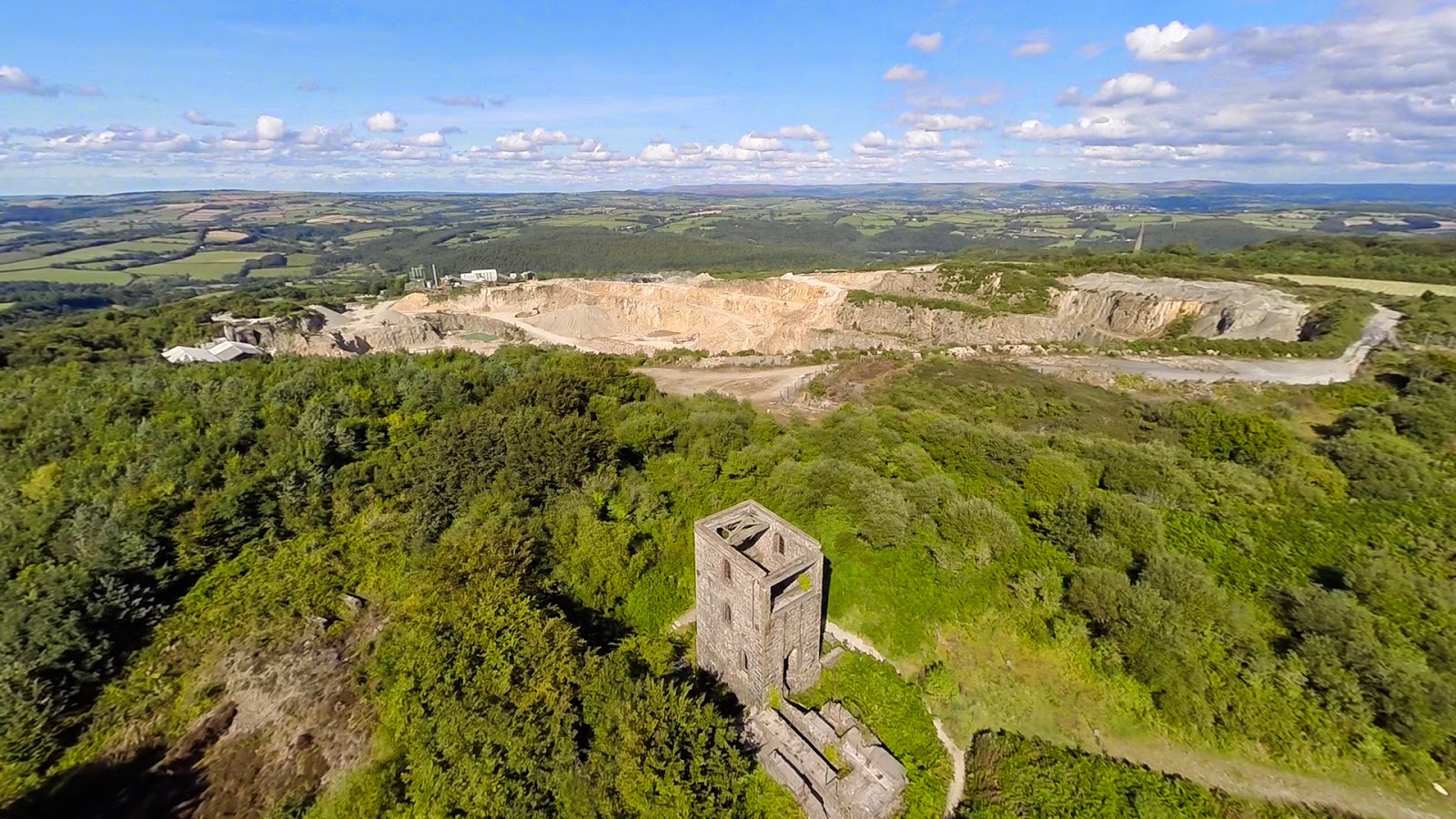The history behind our Drone video of
Cornwall's Mining Heritage
Caradon & The Tamar Valley
Kite Vision is located in a landscape riddled with history with Caradon and The Tamar Valley surrounding us it interested us to fly over a few historic remains of Cornwalls mining world heritage.
In the 18th and 19th centuries Cornwall was one of the richest mining economies in the world. Industries, inventions and communities were built on its wealth of underground treasures.
Caradon
In 1837 James Clymo a mine captain found rich copper ore deep in the rounded hill of Caradon. The ore was so rich and plentiful that within a few years more than twenty mines crowded the moor around Caradon. A railway line was brought up to the eastern moor extending on granite sleepers.
The rise of copper mining here established new settlements and expanded others, but the explosion of mining activity within this formerly isolated landscape was to last barely 50 years; large-scale mining for copper had essentially ceased by 1890.
The rise of copper mining here established new settlements and expanded others, but the explosion of mining activity within this formerly isolated landscape was to last barely 50 years; large-scale mining for copper had essentially ceased by 1890.
South Caradon Mine
Engines were installed in Cornwall and west Devon than any other mining region of the world: it is thought that around 3,000 engine houses were built in total.
Cheesewring Quarry
Latitude 50° 31' 26.2286"N Longitude 4° 27' 31.3988"W
Now silent, the mines and quarries have been taken back by Mother Nature. Sheep and cattle graze contently on the grassy slopes and buzzards fly overhead, while climbers from around the world hang off their ropes on the 100 foot granite faces. Stowes Hill, behind Cheesewring Farm is the site of the Cheesewring Quarry. Stone taken from here was used to build Westminster Bridge and parts of the Royal Naval Dockyard in Plymouth and many other projects throughout the British Isles.
Tamar Valley
Set in an Area of Outstanding Natural Beauty, the Tamar Valley encompasses a breathtaking landscape that is as diverse as it is historically important. The Area spans the border between Cornwall and Devon. Tin, copper, silver-lead and arsenic were all mined here but in today’s tranquillity, it’s hard to imagine the noise from over 100 mines that operated at the height of its mining boom.
Kit Hill
Latitude 50° 31' 9.7"N Longitude 4° 17' 35.0999"W
Kit hill is the highest point in the Tamar Valley with out 400 acres of heathland to explore. Located in the Tamar Valley Area of Outstanding Natural Beauty (AONB), between Callington and the River Tamar with fantastic views of the Tamar Valley, Dartmoor and Bodmin Moor. The word 'Kit' comes from Old English for Kite, a reference to birds of prey. (also one of the meanings behind our name!)
Hingston Down
Latitude 50.521299 Longitude -4.246001
Hingston Down is a hill not far from St.Annes Chapel and Gunnislake. The site of the Hingston Down Consols mine was where the mineral Arthurite was first discovered.
As you will see from our video, located directly behind the building is Hingston Down Quarry, which is still in operation today.
References
Cornish Mining World Heritage. (2014). Available: http://www.cornish-mining.org.uk/. Last accessed 21st November 2014.
Explore Cornwall. (2014). Cornish History Bodmin Moor - Great for Walking. Available: http://www.explorecornwall.com/cornwall-history-traditions.php. Last accessed 21st November 2014.
Wikipedia. (2014). Kit Hill. Available: http://en.wikipedia.org/wiki/Kit_Hill. Last accessed 21st November 2014.
Wikipedia. (2014). Hingston Downs. Available: http://en.wikipedia.org/wiki/Hingston_Down. Last accessed 21st November 2014.






No comments:
Post a Comment